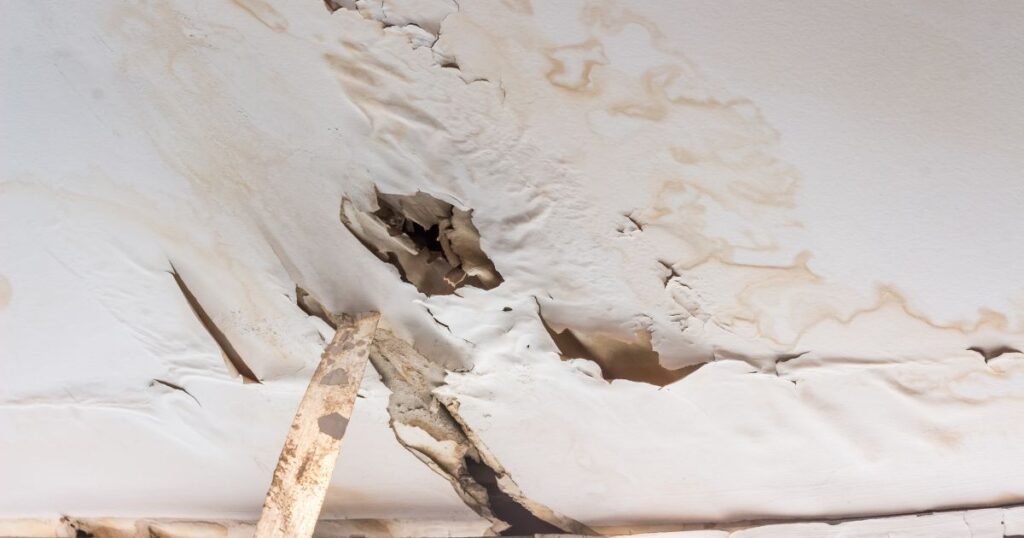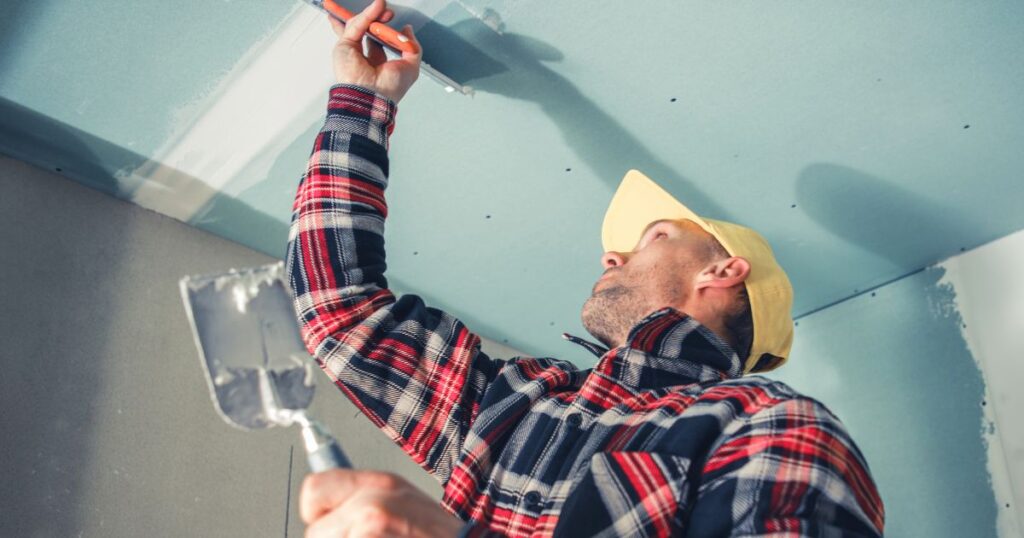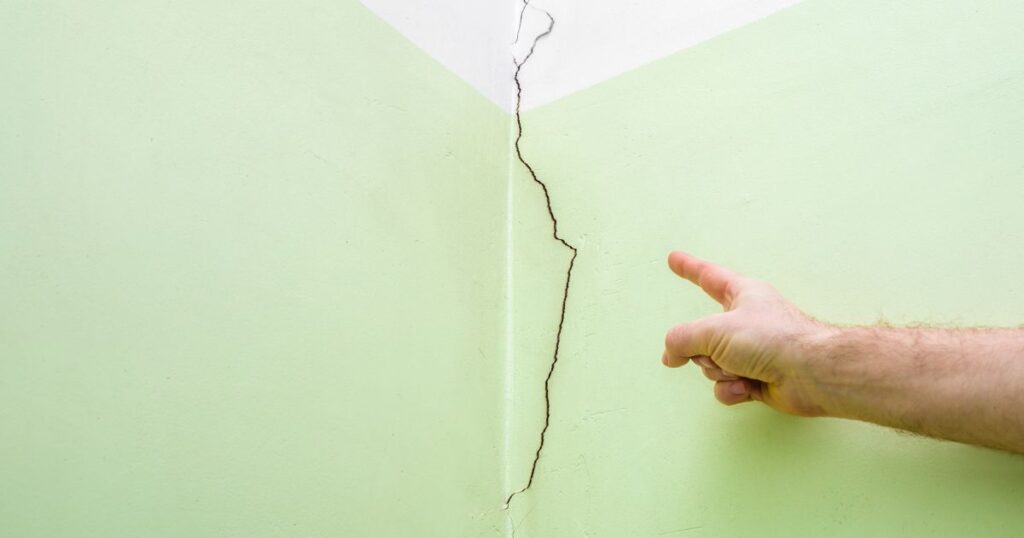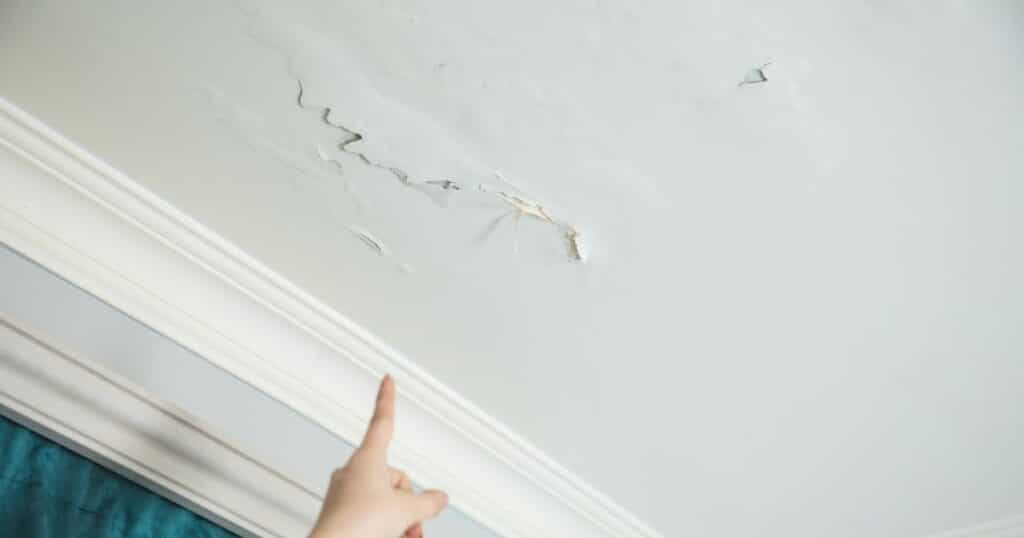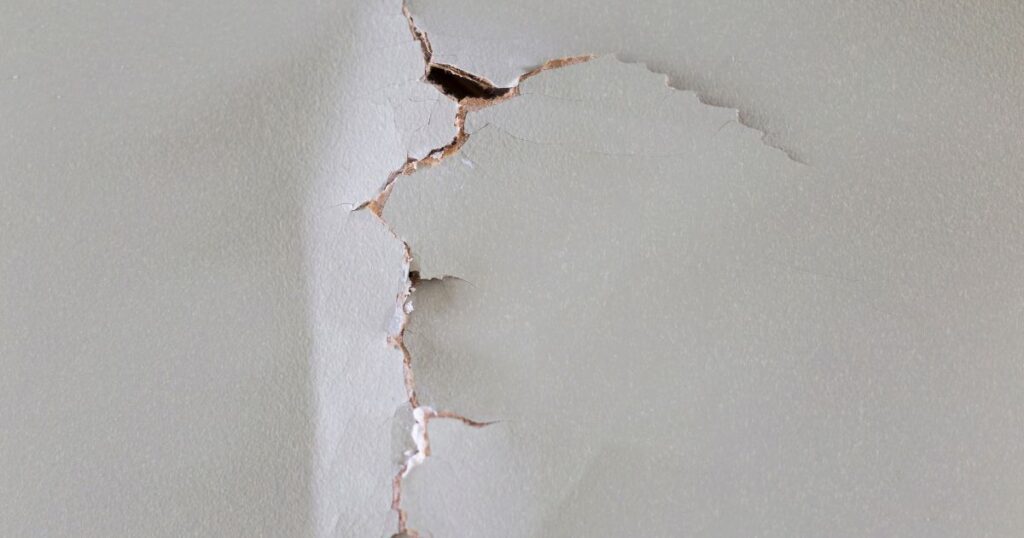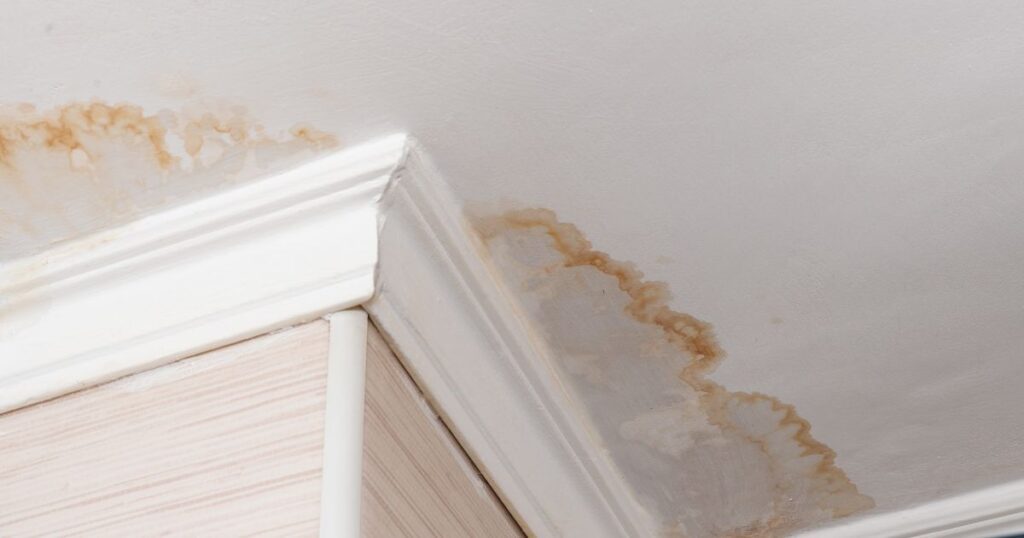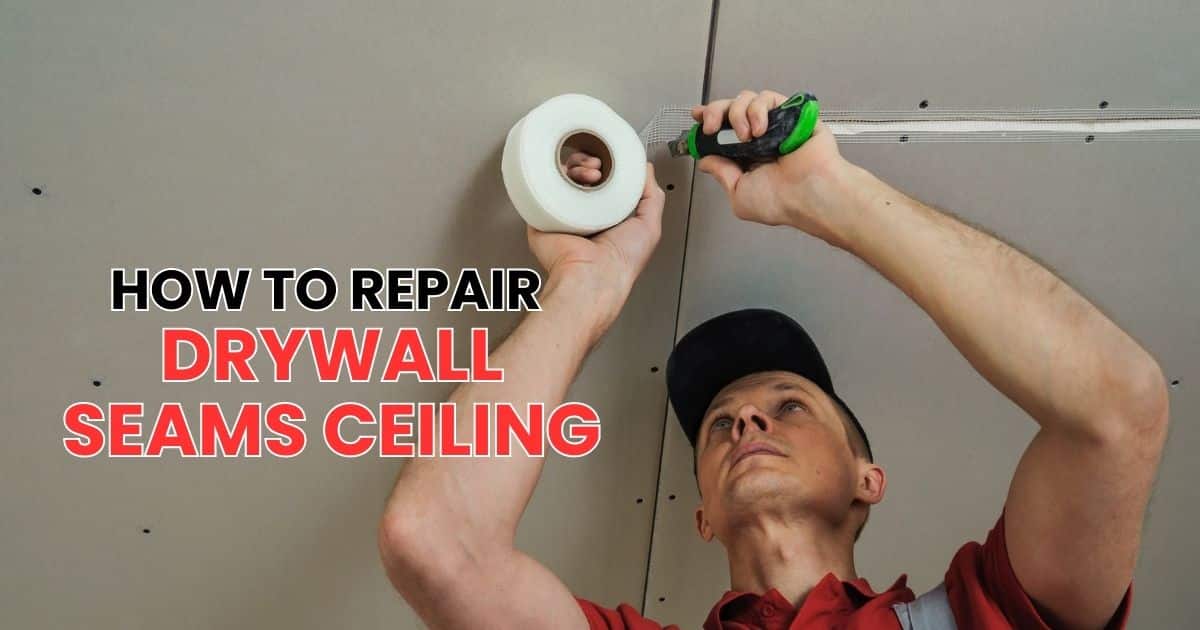
Drywall is a material that has become very popular in modern construction for interior walls and ceilings. The sheets come in different sizes and thicknesses and are screwed into place to create smooth surfaces.
The seams where the drywall pieces meet can then be taped over to create an even smoother surface before painting or adding texture. However, over time, these seams can become damaged, causing an eyesore that is hard to ignore.
Learn how to repair drywall seams ceiling with expert tips. Achieve a seamless finish with our step-by-step guide. Perfect for DIY home improvement projects!
Common Issues with Ceiling Seams and How to Fix Them
As with any other part of the house, ceiling drywall seams can experience damage from various sources, such as settling, humidity changes, or even age. The most common issues include cracks, bumps, or bulges on the seam lines. These issues do not only look terrible but also pose potential hazards if left unattended for long periods.
The Nightmare of Repairing Drywall Seams on Ceilings
Repairing damaged drywall seams on ceilings can be a nightmare for many reasons. First of all, it requires working overhead, which can be strenuous and exhausting, especially when dealing with large areas.
Secondly, it requires precision in applying dry mud to the joints, which must be feathered out smoothly so as not to create bumps or bulges which could cause future issues. And don’t get me started on sanding!
This tedious task involves hours upon hours of dust-filled work that often results in sore arms and respiratory problems from inhaling the minuscule particles left behind. But perhaps worst of all is trying to match textures!
With so many options available (knockdown, orange peel, popcorn…), finding an exact match can prove difficult, if not impossible, without professional help. Don’t even think about patching only a small section, as the difference in texture will stick out like a sore thumb.
Step-by-Step Guide on How To Repair Drywall Seams Ceiling
However, with the right tools and techniques, repairing drywall seams on ceilings can be done successfully and relatively quickly. Skim coating, taping, mudding, and feathering are some of the methods used to achieve a seamless finish.
But when dealing with larger areas, extra steps must be taken to ensure that all seams match in both texture and color. Primarily, before starting any repair work, it’s essential to assess the damage and gather all necessary tools beforehand.
Taking time during preparation will save time in the long run. Applying joint compound over damaged areas of drywall seams is perhaps the most critical step in achieving a seamless repair, while sanding down excess joint compound after it’s dried completes this process.
Troubleshooting Ceiling Seam Repairs
But even with all these techniques employed, some issues may still arise during repairs, especially with old ceilings where textures have since been discontinued or walls painted over multiple times, leaving visible patches regardless of how well you feather them out. In such cases, professional help may be required. Repairing drywall seams on ceilings might seem like an insurmountable task but with patience and practice (and maybe a bit of cursing), anyone can achieve professional-looking results that last for years.
Assessing the Damage
Cracked ceiling seam repair
Before you start any repair job, it’s important to assess the damage. In this case, we are talking about drywall seams on ceilings that have cracks or have started to peel off. First and foremost, identify where exactly the damage is located.
Is it in one spot? Or does it spread all over the ceiling?
If it’s just a single area, then you’re in luck, as it should be easy to tackle. However, if the damage is widespread, then you may want to consider calling a professional.
Troubleshooting ceiling seam repairs
When inspecting the damaged area on your ceiling drywall seams, try to identify what caused the problem in the first place. Was it due to natural wear and tear?
Or was there a water leak behind the wall that caused moisture buildup and eventual damage? Understanding what led to this issue will help prevent similar problems from happening again.
Tools for repairing drywall seams on the ceiling
Once you have identified all of these factors and assessed how bad the problem is, gather all of your tools before starting with any repairs. You’ll need basic items like sandpaper and joint compound, along with specialized drywall knives and taping tools for larger jobs.
Covering and hiding ceiling tape seams
A common issue with repaired drywall seams on ceilings is that they stand out like a sore thumb. This can detract from an otherwise perfectly good-looking room. To avoid this issue altogether, when patching tape seams or cracks in your ceiling’s drywall surface, take special care when applying paint or wallpaper so as not to highlight any awkward patches.
Sanding and smoothing ceiling seams
Next up comes sanding – arguably one of the most satisfying parts of the entire drywall seam repair process. Sanding is a crucial step towards getting a smooth, even finish on your ceiling seams.
You’ll need to take extra care in this step to make sure you don’t sand through your primer or painted surface and cause further damage. If you’re unsure how much to sand, it’s best to err on the side of caution.
Importance of taking time before repairs
Now that you’ve assessed the damage, identified what caused it, and gathered all your tools – it’s important not to jump straight into repairs without taking some time for proper planning. Do you have everything you need?
Are there any other potential issues that could arise during repairs? Take a deep breath if needed and start working with purpose so that every minute counts as progress towards finishing this job right!
Gathering Materials
List of Necessary Materials for Ceiling Drywall Repair
Before you start repairing your ceiling drywall seams, make sure that you have all the necessary materials to avoid any delays or interruptions during the repair process. Here is a list of essential materials that you will need:
- Drywall joint compound
- Joint tape
- Sandpaper
- Putty knife (preferably 6-inch or 8-inch)
- Paint roller and brush
- Primer and paint (matching the existing ceiling color)
- Dust mask Make sure to double-check the amount of joint compound and tape needed based on the scale of the project.
If it’s a small repair job, then a small container of joint compound will do. However, if it’s a large project, then consider purchasing joint compounds in larger quantities.
Creative Tips for Selecting Materials
When selecting materials for repairing drywall seams on ceilings, keep in mind that there are many creative options available. For instance, you can choose to use textured ceiling paints to add depth and personality to your repaired ceiling drywall seams.
Another helpful tip is to carefully match your primer and paint colors with those of your existing ceiling. This can be achieved through careful observation using natural light from windows or even artificial light sources like lamps.
Consider using high-quality tools when carrying out this project because they’ll come in handy when smoothing out rough surfaces or shaping corners precisely. With quality tools at your disposal, you won’t have to worry about running into any problems while trying to achieve that perfectly seamless finish on your repaired ceiling drywall seams!
Regardless of which creative tips or tricks you decide to take advantage of while selecting materials for this type of repair job on ceilings, always aim for high-quality products from trusted manufacturers with excellent customer reviews. A good rule of thumb is: if it’s cheap or low-quality, it’s probably not worth the trouble in the long run.
Preparing the Area: The First Step to a Seamless Ceiling Repair
If you’ve ever attempted to patch or repair drywall seams on your ceiling, you know that the process can be messy and time-consuming. However, what many DIY enthusiasts don’t realize is that proper preparation is key to achieving a seamless finish. Before you even think about applying joint compound or paint, take the time to adequately prepare the area for repair.
The Importance of Clearing Out Furniture
The first step in preparing an area for ceiling repair is to clear out any furniture or other non-fixed objects from the room. This step can be especially frustrating if you’re dealing with a small space or heavy furniture pieces. However, moving objects out of the way will give you plenty of room to move around and prevent accidental damage during repairs.
Protective Floor Coverings are Essential for Clean-up!
Once your workspace is cleared, it’s time to protect your floors and other surfaces from damage. Use protective coverings such as drop cloths or plastic sheeting to keep dust and debris contained during repairs. While this step may seem tedious, it will save you hours of cleaning up after repairs are complete.
Clean the Area Around The Repair Site
It’s also important to clean the area surrounding the repair site thoroughly before beginning repairs. Wipe down walls and ceilings in the vicinity with a damp cloth or sponge to remove dust and cobwebs that may have accumulated over time. This will help prevent debris from sticking to freshly applied joint compound later on.
Don’t Skimp on Protective Gear
Don’t forget about protective gear. Wear gloves, goggles, and a mask while working with joint compounds and sandpaper – this will protect your hands from chemicals found in some types of joint compounds as well as prevent debris from entering your eyes or lungs.
With these steps completed, you’re ready to tackle the actual ceiling repair process. Remember, proper preparation is essential for achieving a seamless finish – so don’t skimp on this important step!
Applying Joint Compound: The Key to a Seamless Repair
Step-by-Step Guide to Repairing Drywall Seams on the Ceiling
Now that you’ve assessed the damage and gathered all the necessary tools for repairing drywall seams on the ceiling, it’s time to apply joint compound. This step is critical in achieving a seamless repair, so pay attention to detail and follow these step-by-step instructions carefully.
First, use your putty knife to scoop out some joint compound from your container. Place it onto the damaged area of the seam, using enough pressure to fill in any gaps or holes.
Make sure not to apply too much at once; if you do, it will take longer to dry and may crack or shrink. Next, use your putty knife in a circular motion over the joint compound.
This will help blend it into the surrounding areas of the ceiling and create a smooth surface. As you work, check for any bumps or ridges that may require additional sanding later on.
Repeat this process until all damaged areas have been covered with joint compound. Feathering drywall seams on the ceiling can be tricky, but taking your time and applying light pressure will make all the difference.
Covering and Hiding Ceiling Tape Seams
Once the joint compound has been applied over damaged areas of drywall seams on ceilings, it’s important to cover and hide any tape seams that may be visible. Apply a thin layer of joint compound over each tape seam using your putty knife.
Be sure to smooth out any bumps or ridges as you go. If necessary, skim-coating ceiling seams can be done in order to make them less visible after they have been filled with joint compounds.
Matching Texture on Repaired Ceiling Seams
Matching texture on repaired ceiling seams is crucial for achieving professional-looking results. There are several techniques for achieving a seamless finish on ceiling drywall, including mudding and taping ceiling joints, sanding and smoothing ceiling seams, and applying drywall mud to ceiling joints. One technique that works particularly well is skim coating.
This involves spreading a thin layer of joint compound over the entire surface of the ceiling, then using a trowel to create a smooth finish. Once the joint compound has dried, it can be sanded down and painted over.
Priming and Painting Repaired Ceiling Seams
Once all repairs have been made, it’s time to prime and paint over them. Use a high-quality primer that will seal the surface of the joint compound and ensure good adhesion for your paint. Allow it to dry completely before painting.
When selecting paint colors for repaired areas of your ceiling, be sure to choose shades that complement the surrounding areas of the room. It may be necessary to blend colors or patterns in order to achieve a seamless repair.
Troubleshooting Ceiling Seam Repairs
Even with careful attention to detail during repairs, there may be issues that arise during or after patching and smoothing ceiling drywall. Common issues with ceiling seams include cracking, shrinking, or peeling. If you encounter any of these problems during your repair process, don’t panic!
Simply go back over the affected area with additional joint compound or use sandpaper to smooth out any rough spots. With patience and persistence, you can achieve professional-looking results on your repaired ceiling seams.
Sanding and Finishing Touches
Sanding Down the Excess Joint Compound for a Smooth Surface
Congratulations! You’ve made it to the sanding stage of your ceiling drywall repair. But before you get too excited, let me remind you that this is one of the most important steps in achieving a seamless finish on your ceiling drywall.
If you don’t take your time to sand down excess joint compounds properly, all your hard work up until now will be for nothing. First things first: make sure you have the right tools for the job.
A pole sander with 120-grit sandpaper is recommended for larger areas, while a hand sander with 220-grit sandpaper works well for smaller touch-up spots. Start by feathering drywall seams on the ceiling – This means gently sanding around the edges of your patch so that it blends in seamlessly with the surrounding area.
Once you’ve started sanding, be careful not to put too much pressure on the sander or else you’ll risk creating uneven patches and ridges. Keep an eye out for any spots that may need additional attention and focus on those areas until they’re as smooth as possible.
Adding Creative Finishing Touches like Texture or Decorative Molding
If you’re like me, simply repairing a damaged section of drywall just won’t cut it; I want my repairs to blend in seamlessly with my room’s decor. That’s why I always recommend getting creative with finishing touches, such as texture or molding.
For example, if your room has a textured ceiling (like popcorn), then matching that texture will make all the difference in making a perfect patch job unnoticeable. Skim-coating ceiling seams or applying drywall mud to ceiling joints can help create this texture.
If adding texture isn’t an option because of time constraints or personal preference, then consider adding decorative molding to the ceiling instead. This serves two purposes: it covers any flaws in the repaired section of drywall while also adding a touch of elegance to the room.
Before you reach for the molding, though, make sure you’ve double-checked your repair work. Troubleshooting ceiling seam repairs is much easier before you start attaching moldings to your ceiling.
Look for any missed spots or places where the paint isn’t blending in well enough with surrounding areas. Once you are satisfied that your repair work is perfect, then add any finishing touches like texture or moldings – but remember, these should be added after priming and painting repaired ceiling seams to make sure that they blend in perfectly.
Painting and Blending In
Blending in Repaired Areas
In order to achieve a professional-looking finish when repairing drywall seams on your ceiling, you’ll need to take special care when it comes time to paint and blend in the repaired areas. It’s not enough to simply slap some paint over the joint compound and call it a day.
The goal is to make the repair look as seamless as possible, so attention to detail is crucial during this step. Here are some tips for blending in repaired areas with surrounding ceiling paint color or wallpaper pattern.
How to Match Texture on Repaired Ceiling Seams
One common issue with repairing drywall seams on ceilings is matching the texture of the surrounding area. When you apply joint compound over a damaged seam, it can leave an uneven surface that doesn’t match the rest of the ceiling. To fix this, you’ll need to use techniques for achieving a seamless finish on ceiling drywall.
Techniques for Achieving a Seamless Finish on Ceiling Drywall
One technique for achieving a seamless finish involves feathering drywall seams on the ceiling. This means using a putty knife or trowel to spread the joint compound out from the center of the repair area towards its edges. By doing this, you create a gradient effect that blends in with surrounding areas.
Troubleshooting Ceiling Seam Repairs
If you have trouble achieving a seamless finish after feathering your repaired area, try skim-coating ceiling seams with another thin layer of joint compound. This will help smooth out any bumps or rough spots left by previous layers and create an even surface for painting.
Priming and Painting Repaired Ceiling Seams
Once your repair area is completely smooth and blended in with surrounding surfaces, it’s time to prime and paint it. Make sure that you use a primer specifically designed for drywall, as this will help your paint adhere evenly and smoothly. Then, choose a paint color that matches the rest of your ceiling as closely as possible.
Frequently Asked Questions
Is it normal to see drywall seams in the ceiling?
It is common to see drywall seams in a ceiling, especially in older or poorly installed drywall. However, with proper installation techniques and finishing, it is possible to minimize the visibility of these seams.
How do you fix drywall cracks where the wall meets the ceiling?
To fix drywall cracks where the wall meets the ceiling, start by widening the crack slightly and removing any loose debris. Then, apply a joint compound or spackle to fill the crack, feathering it out on both sides. Sand, prime, and paint the repaired area to achieve a seamless finish.
How do you fill gaps in drywall seams?
To fill gaps in drywall seams, use joint compound or spackle. Apply the compound into the gap, using a putty knife to smooth it out and feather the edges. Allow it to dry, sand it lightly, and then apply additional coats if necessary to achieve a flush and seamless result.
Why is drywall separating from the ceiling?
Drywall separating from the ceiling can occur due to several reasons, including improper installation, structural movement, or moisture issues. It is important to identify the underlying cause and address it before repairing the drywall. Once the cause is resolved, the drywall can be reattached using screws or adhesive, and any visible gaps or seams can be repaired using a joint compound or spackle.
How do you make drywall seams invisible?
To make drywall seams invisible, start by properly taping and mudding the seams during installation. Sand the seams carefully to achieve a smooth surface. Apply multiple thin coats of joint compound, feathering the edges outward and sanding between each coat. Finally, prime and paint the drywall using proper techniques to achieve a seamless and invisible finish.
Should drywall seams be taped?
Drywall seams should be taped. Taping drywall seams helps to create a smooth and seamless surface by covering the joints between the individual drywall panels. The tape helps to reinforce the joint and prevent cracks or gaps from forming over time.
Conclusion
In this guide, we’ve covered all the necessary steps for repairing drywall seams on ceilings. We began by identifying the damage and assessing the severity of the issue.
Then, we gathered all the necessary materials and properly prepared the area for repair. We then dove into applying joint compound, sanding and smoothing ceiling seams, and finishing touches such as painting and blending in repaired areas with surrounding ceiling paint or wallpaper pattern.
That being said, it’s important to remember that repairing textured ceilings doesn’t have to be a daunting task. By following our step-by-step guide to repairing drywall seams on the ceiling, you’ll achieve professional-looking results in no time!
It’s important to take your time and follow instructions carefully in order to achieve successful repairs. So take it slow, don’t rush the process.
You want your ceiling repair job to look flawless, right? So resist cutting corners or rushing through any of these steps.
Trust us – taking the time now will pay off later when you’re admiring your seamless ceiling repair!

